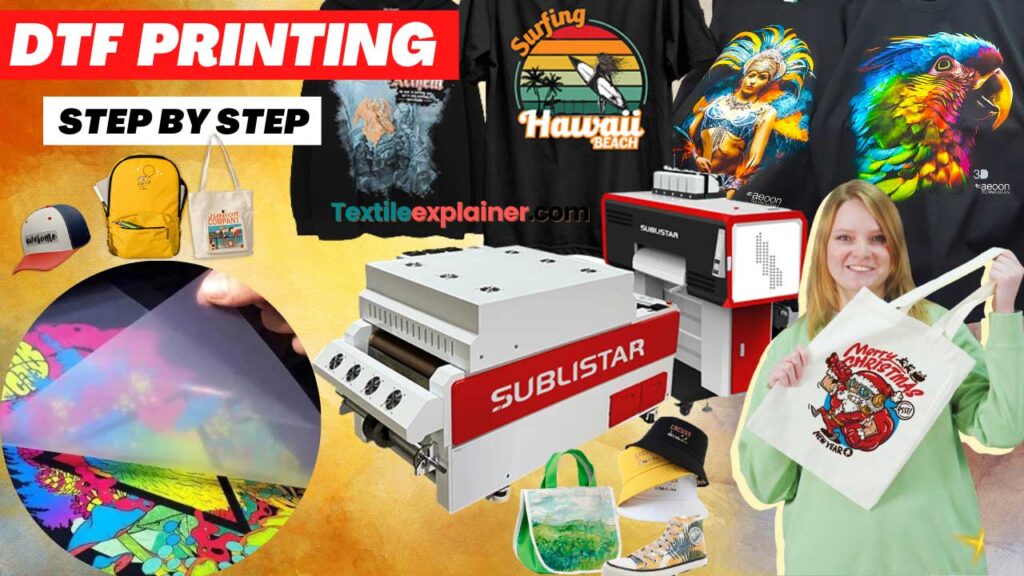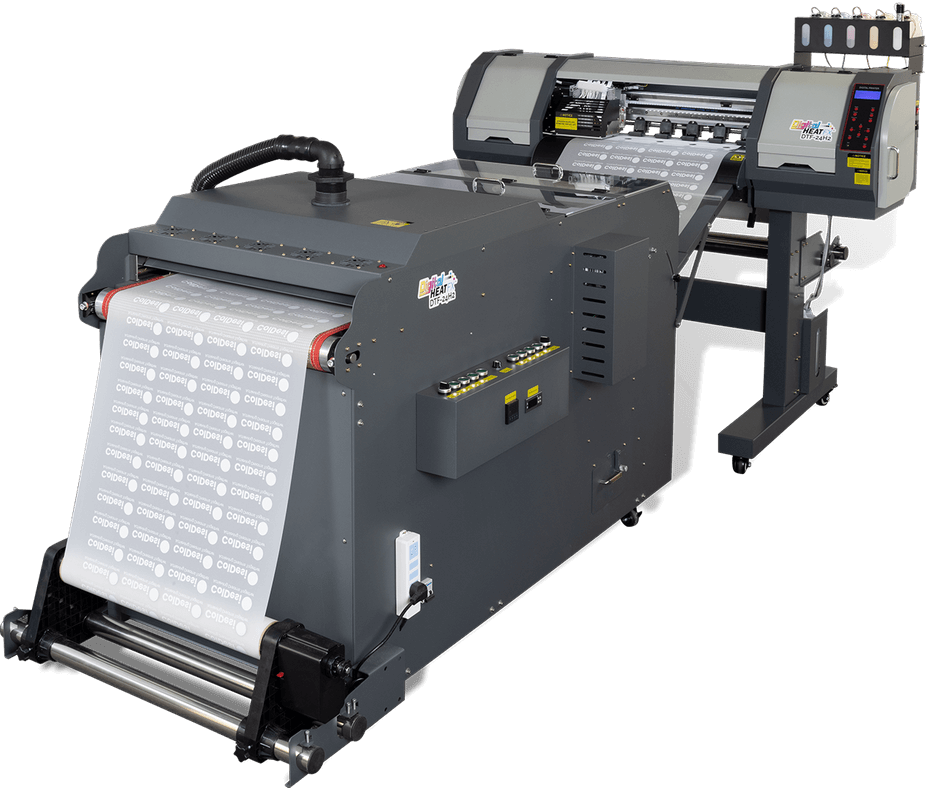Understanding DTF Printing: Tips and Tricks for Getting Vibrant and Durable Prints
Worldwide of fabric printing, accomplishing vivid and durable prints is a desired ability that can elevate the high quality of your result. Mastering DTF (Direct to Film) printing calls for a blend of technical expertise, accuracy, and attention to detail. From choosing the appropriate products to tweak print settings and developing post-printing finishing techniques, there are many variables that can affect the end result of your prints. Understanding just how to navigate these intricacies can make all the distinction between a sub-par result and a truly outstanding one.

DTF Printing Essentials
For those new to the world of fabric printing, recognizing the basics of DTF printing is vital to mastering this innovative strategy. Straight to Film (DTF) printing is a modern approach that includes transferring layouts from an unique movie onto different textiles making use of a warm press. Unlike traditional approaches like display printing, DTF offers advantages such as vibrant shades, elaborate detailing, and the capacity to print on varied materials like cotton, polyester, and blends.
The process starts by publishing the layout on an unique DTF movie utilizing a compatible printer with CMYK or CMYKW ink collections. Once the layout is published, it is then treated with a heat press to produce a lasting and durable print. DTF printing is recognized for its capability to reproduce complicated designs with high precision and shade accuracy, making it a preferred choice for companies looking to produce custom clothing, advertising items, and a lot more.
Choosing the Right Materials

The sticky powder acts as a bonding agent in between the published layout and the material, so it needs to have solid bond homes to ensure a lasting and durable transfer. By thoroughly selecting the best products for DTF printing, printers can enhance the high quality, vibrancy, and longevity of their prints.
Maximizing Publish Settings
When intending to accomplish the best lead to DTF printing, precise focus to enhancing print setups is important for making sure high-grade and accurate transfers onto fabrics. One essential facet to consider when enhancing print setups is the resolution. Higher resolutions normally result in sharper and much more thorough prints, enhancing the overall high quality of the transfer. In addition, adjusting the ink density can aid guarantee and accomplish vivid colors that the style attracts attention on the fabric.
While enhancing the speed can improve efficiency, it might endanger the last print's clarity and color saturation. Experimenting with various rates and observing the results can help determine the optimum setup for each print task.
Furthermore, tweak shade profiles and guaranteeing proper shade administration are necessary for accomplishing constant and accurate shades across various prints. By adjusting color setups and profiles, printers can minimize shade deviations and generate consistent results, boosting the general print quality and client fulfillment.
Preparing Artwork for DTF Printing
To make certain optimum cause DTF printing, meticulous focus to detail is essential when preparing art work for transfer onto textiles. Begin by choosing high-resolution images to preserve clearness and sharpness in the final print. Vector graphics are preferred as they can be quickly scaled without losing high quality. Convert the art work to CMYK shade mode to ensure that the shades equate accurately from display to print. Adjust the shade degrees and contrast as required to enhance the vibrancy of the style. When adding text to the art work, choose fonts that are legible and suitable for the intended dimension. Remember to mirror the final layout before printing to make sure that it transfers properly onto the garment. In addition, consider the material kind and shade when selecting the artwork, as these variables can affect the last look. By following these steps and paying close interest to the information, you can prepare art work that is optimized for lively and sturdy DTF prints.
Post-Printing Finishing Methods
Carrying out efficient post-printing ending up strategies is critical to enhancing the sturdiness like this and visual charm of DTF prints on textiles. Once the printing process is full, using warmth to the published layout is essential (DTF Printing). Heat not just help in treating the ink however likewise guarantees that the colors are lasting and vibrant. A heat press equipment established at the suggested temperature and pressure setups can assist accomplish ideal results.
Once the film is removed, the print may require added treating time to further establish the ink right into the fabric. This his comment is here action aids improve the washability and durability of the print, ensuring it can hold up against several clean cycles without fading or cracking.
Furthermore, trimming any type of excess movie around the design can provide the last print a expert and tidy appearance. Making the effort to appropriately finish DTF prints post-printing can considerably influence the total quality and durability of the fabric layout.

Verdict
Finally, grasping DTF printing calls for a thorough understanding of the basics, choosing proper products, enhancing print settings, preparing artwork efficiently, and using post-printing ending up strategies. By adhering to these tricks and suggestions, one can accomplish lively and long lasting prints that satisfy their preferred high quality requirements. Constant method and interest to detail are vital in accomplishing effective end results in DTF printing.
From choosing the best materials to tweak print settings and perfecting post-printing finishing techniques, there are countless variables that can affect the outcome of your prints. Unlike conventional methods like display printing, DTF supplies benefits such as dynamic colors, intricate describing, and the capacity to print on varied materials like cotton, polyester, and blends.
Once the layout is published, it is then cured with a warmth press to produce a resilient and lasting print.When intending to accomplish the finest outcomes in DTF printing, thorough interest to optimizing print setups is important click over here for guaranteeing premium and precise transfers onto fabrics.In verdict, grasping DTF printing requires a thorough understanding of the fundamentals, selecting ideal materials, maximizing print settings, preparing art work efficiently, and making use of post-printing completing strategies.
Comments on “Exploring the Art of DTF Printing: Strategies and Applications Revealed”